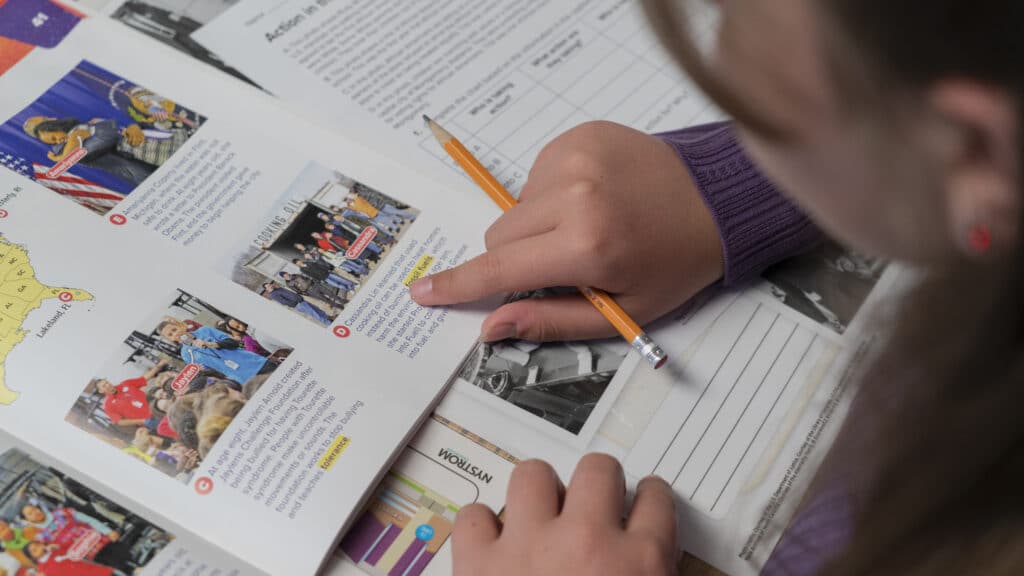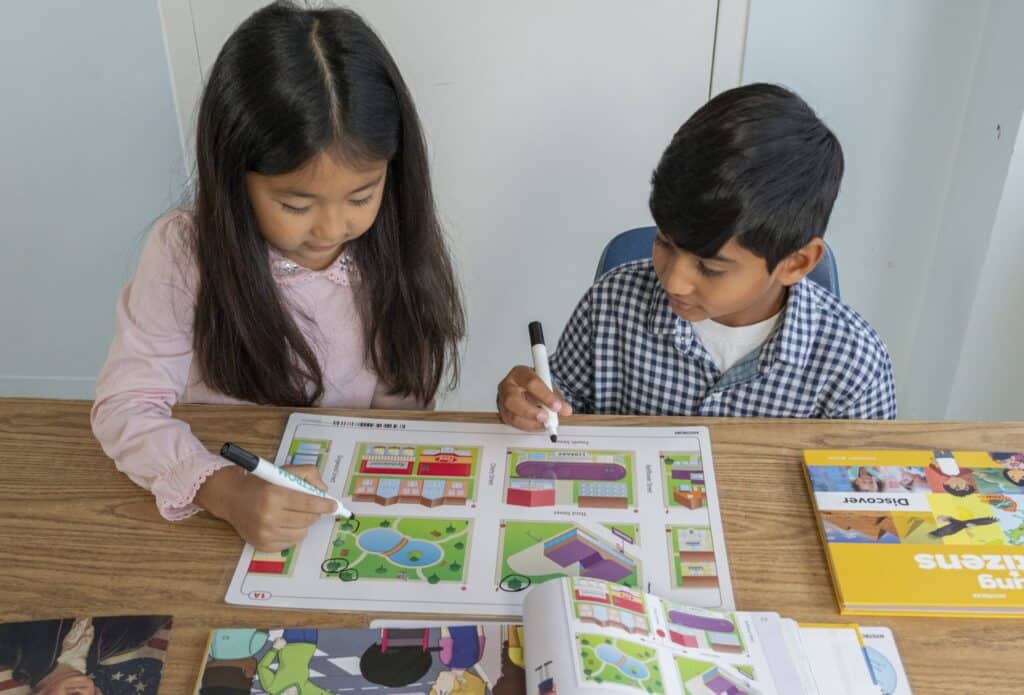Culturally Responsive Anti-racist Equitable (CARE) - InVESTING
Professional Development > Learning Playlists > Culturally Responsive Anti-racist Equitable (CARE) > Investing
In a culturally responsive school or district, students’, families’, and educators’ cultures are included in all aspects of supports and services that promote well-being and mental health. Anti-racist policies and practices promote equity and oppose racism and other forms of oppression. Equitable schools and districts provide the climate and resources that enable all students and educators to perform at their highest level. Culturally responsive, anti-racist and equitable (CARE) schools and districts embrace cultural differences and assets; use cultural knowledge to promote wellness and academic success; mediate power imbalances based on cultural identities; and work to dismantle systems of injustice.
This Investing playlist is designed for schools with an established equity foundation that are ready to embed culturally affirming and anti-racist practices into the fabric of their school systems. This stage focuses on institutionalization—integrating equity into policies, leadership development, and continuous improvement structures. Self-awareness becomes a sustained, collective practice through ongoing feedback loops, restorative practices, and co-creation with students, staff, and families. The playlist supports schools in driving systemic change while honoring wellness, representation, and the power of culturally responsive, healing-centered learning environments.
- Culturally Responsive Anti-Racist & Equitable (CARE) Assessment

- 45 mins
This assessment from the National Center of School Mental Health is recommended for all stages of readiness in this work. This assessment contains five domains: 1) Teaming and Collaboration; 2) School Climate; 3) School Discipline; 4) Curricula and Teaching; and 5) Professional Development. Each indicator includes a few ways schools or districts may demonstrate success in each area. The examples included in the assessment are not exhaustive, but illustrative, and ratings in each domain can be used as a starting place for quality improvement initiatives. This assessment tool provides suggestions for action planning that can be tailored to meet your school’s needs. A team approach with broad and diverse participation in this process ensures meaningful assessment, successful planning, and implementation.
Add blurb from RSSI

When addressing trauma, racism, and equity, the key lies within the racial consciousness and equity-centered approaches of district and school leaders. In June 2023, a panel discussion was conducted to examine the perspectives and lived experiences of leaders working in school districts (PK-12) to explore what, if any, practices have served them well in advancing racial justice and educational equity. Facilitators for these interviews were Dra. Alexandra Escobar, founder of Affirming Voices, and Dr. Mashana Smith, clinical psychologist at Center for Childhood Resilience at Ann & Robert H Lurie Children’s Hospital. The purpose of this series is to learn from the stories of those in the field who are doing this important work; listen to their struggles, applaud their victories and learn from their journeys. Each interview can be used with your school or district team as a learning tool to begin conversations, evaluate your environment or as a spark to fuel your own path to equity and racial justice.
- 60 mins

This resource comes from W.K. Kellogg Foundation’s work that includes recommended tools and resources for implementing racial equity strategies as part of a human resources function. This resource can be valuable to human resources and culture and equity professionals. It may also be useful to any leader doing internal organizational transformation work in school communities.
- 25 mins
- Insights from the Field: Learnings from Organizational Journeys in Centering Equity (report)

This anthology of three papers lifts up the journeys of nonprofit organizations across the country that are focusing on centering racial equity within their internal programming and operations. This report surfaces learning in three specific areas: leadership perspectives in stewarding organizational race equity journeys; organizational approaches to cultivating a supportive culture for racial equity work; and organizational approaches for fostering individual journeys toward shared racial equity practice.
Learnings from Organizational Journeys in Centering Racial Equity
- 30 mins
- Healing Schools (research article and framework)

This research article, Healing Schools: A Framework for Joining Trauma-Informed Care, Restorative Justice, and Multicultural Education for Whole School Reform, describes three approaches to school reform: Trauma-informed Care (TIC), Restorative Justice (RJ), and Multicultural Education (MCE). The authors of this paper, representing the fields of psychology, social work, and education, present an integrated framework that acknowledges the commonalities these three models share, as well as the ways that they complement one another by focusing our attention on different aspects of urban education. It’s argued that the concept of healing offers a powerful heuristic for systemic school reform — a guide for rethinking how we address pedagogical, disciplinary, curricular, and policy decisions.
There’s a call for the creation of “healing schools,” arguing that, 1) Schools can play a valuable role in promoting healing and well- being among the students and families with whom they engage and 2) Many of our urban schools themselves need healing because they have become systems of toxic environments for adults and youth alike. To address the need for healing in schools, a framework promoting four key values is presented: relationships, safety, belonging, and agency.
- 30 mins
- A Restorative Approach for Equitable Education (research brief)

This report explores how the time we are in presents significant opportunities for schools to reimagine and redesign their structures and practices to pave a more equitable path forward. Redesigning schools so that they are restorative spaces—environments where young people are known, nurtured, and healed—is a key way that schools can embody more equitable approaches to meet students’ immediate and long-term needs. Restorative approaches are a central dimension of a whole child approach to education, which recognizes and attends to the unique strengths, needs, and interests of students. Based in the science of learning and development, restorative approaches support students’ academic, cognitive, and social-emotional growth; their physical and mental health and well-being; and the promotion of their distinct individual identities. Restorative approaches also recognize the long-standing inequities present in both schools and society and are grounded in ameliorating those inequities by building safe, inclusive learning environments where consistent, caring relationships can thrive and every young person is valued and affirmed.
RESEARCH BRIEF: A Restorative Approach for Equitable Education
- 20 mins
- Building Resilience and a Trauma-Informed School with the NC Center for Resilience & Learning

- 10 mins
Baskerville Elementary is a public school located in North Carolina, in a small city setting that has seen many natural disasters in the past few years. Reada bout how their principal sought buy-in from the school community to create a trauma-informed school. A Resilience Team was built with leaders of the school to take the next step beyond training and awareness and begin to implement trauma-informed change and strategies school-wide. heck out additional learning and resources from the NC Center for Resilience and Learning.
- Fostering Belonging, Transforming Schools: The Impact of Restorative Practices

This report describes how many schools use exclusionary discipline—such as suspensions and expulsions—to deter students from misbehaving and to protect students from the harms associated with exposure to student misbehavior. Research indicates that, while often implemented with good intentions, exclusionary discipline increases (rather than deters) misbehavior and risks of dropout and juvenile and adult incarceration. Moreover, exclusionary discipline exerts secondary harms, negatively impacting school climate among those who see their peers suspended. In response, schools have implemented restorative practices, which include proactive practices to inculcate conflict resolution skills and strengthen community bonds (for example, through community-building circles) and responsive practices to resolve conflicts and repair relationships (for example, through mediation and harm-repair circles). Proponents argue that because these practices address root causes of student misbehavior while reducing exclusionary approaches, they have the potential to ameliorate racial disparities while enhancing school climates, academic engagement, and academic performance.
- 12 mins
- Creating Identity-Safe Schools and Classrooms (research report)

This research report addresses the ways in which practitioners can build inclusive and affirming school environments with keen attention to identity safety that can support all students in feeling safe, protected, and valued in school environments. A growing body of research points to effective school-based practices and structures, described below, that educators can use to foster the identity safety that nurtures student achievement, positive attachments to school, and a genuine sense of belonging and membership for each student.
Creating Identity-Safe Schools and Classrooms | Learning Policy Institute
- 20 mins
- Well-Being for Teachers & Staff (toolkits and resources)

- 45 mins
This bundle of resources can help schools build, implement and be accountable for the well-being of school staff.
Creating a Well-Being Space: A well-being space (or wellness space, zen den -whatever you choose to call it) provides an area to relax and recharge during the school day. These areas can foster environments that promote physical, mental, and emotional well-being. They can also be a great place to promote staff connection and collaboration. A warm, welcoming well-being space is one way to show hardworking school staff and teachers they’re valued and appreciated, which decreases staff stress, boosts morale, and increases job satisfaction. Healthy and fulfilled school staff can perform at their best, model emotional regulation for students, and have fewer sick days. Well-Being Spaces for Teachers and Staff – Thriving Schools
Employee Wellness Toolkit: This quick-start toolkit is provided as a supplement to Healthy School, Healthy Staff, Healthy Students: A Guide to Improving School Employee Wellness, is designed to increase the capacity of district and school staff in addressing school employee wellness, to improve the health of all school employees, and to improve student health and academic outcomes. Employee wellness toolkit for schools – Society for Public Health Education
Promoting Mental Health & Well-Being in Schools: An Action Guide for School and District Leaders: This action guide was designed for school administrators in kindergarten through 12th grade schools (K-12), including principals and leaders of school-based student support teams, to identify evidence-based strategies, approaches, and practices that can positively influence students’ mental health. Click here for Action Guide. Click here for Getting Started guide.
Wellness Calculator: WellSteps, created a series of research-based return on investment (ROI) calculators to help estimate the effect of well-designed wellness programs on health care costs, absenteeism, and presenteeism. Each of the three ROI calculators will examine a different employee expense. A well-designed wellness program is one that changes the health behaviors of employees, spouses, and dependents, thus lowering health risks, reducing chronic disease, and helping worksites create a culture of health. The design of the WellSteps wellness solution was based on this body of evidence. Wellness ROI Calculator
Employee Wellness Slides: Use these two slide decks for presentations to promote the benefits in staff wellness in schools. Investing in School Employee Wellness slide deck, and Promoting Mental Health & Well-Being in Schools: An Action Guide for School and District Leaders slide deck.
